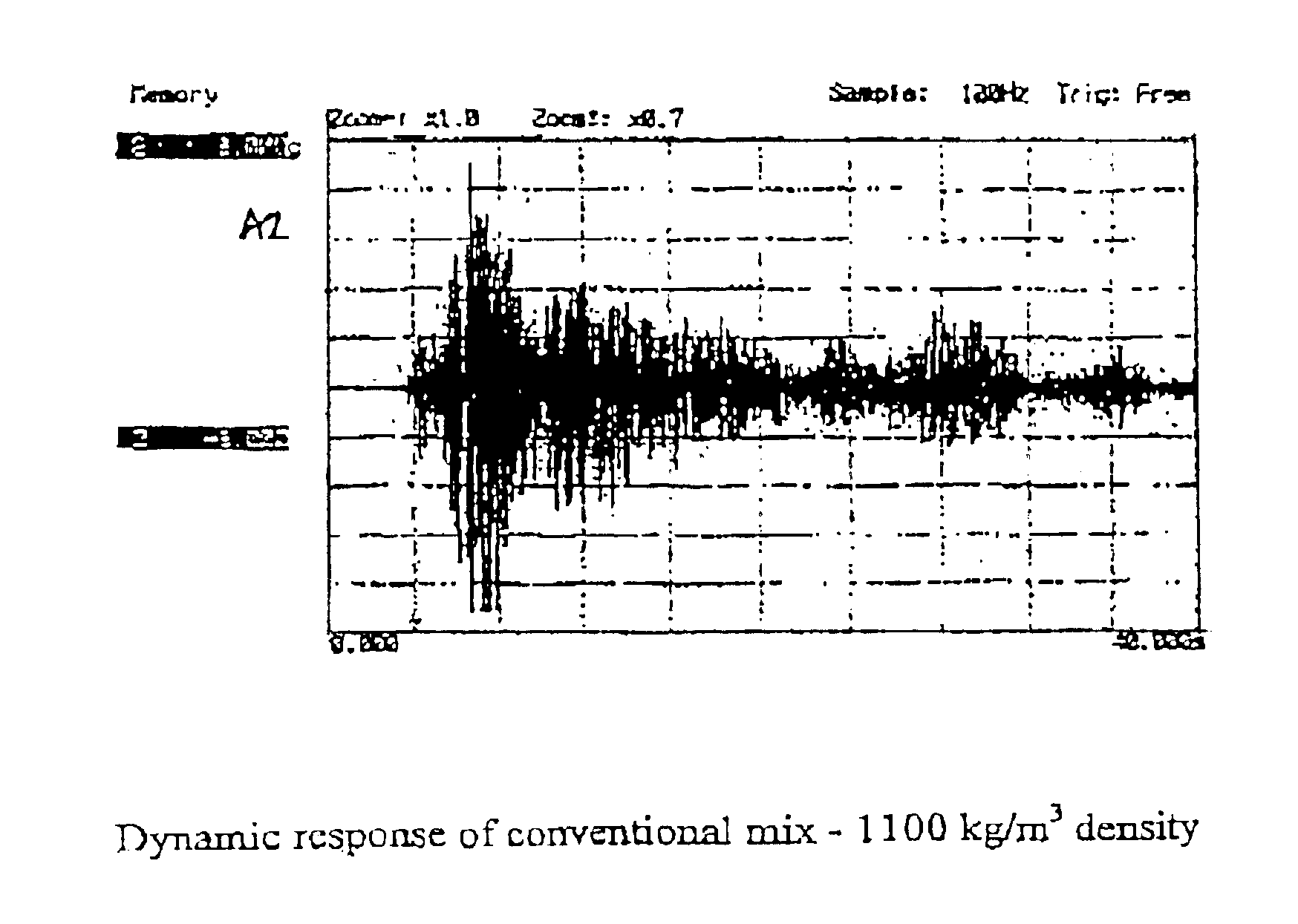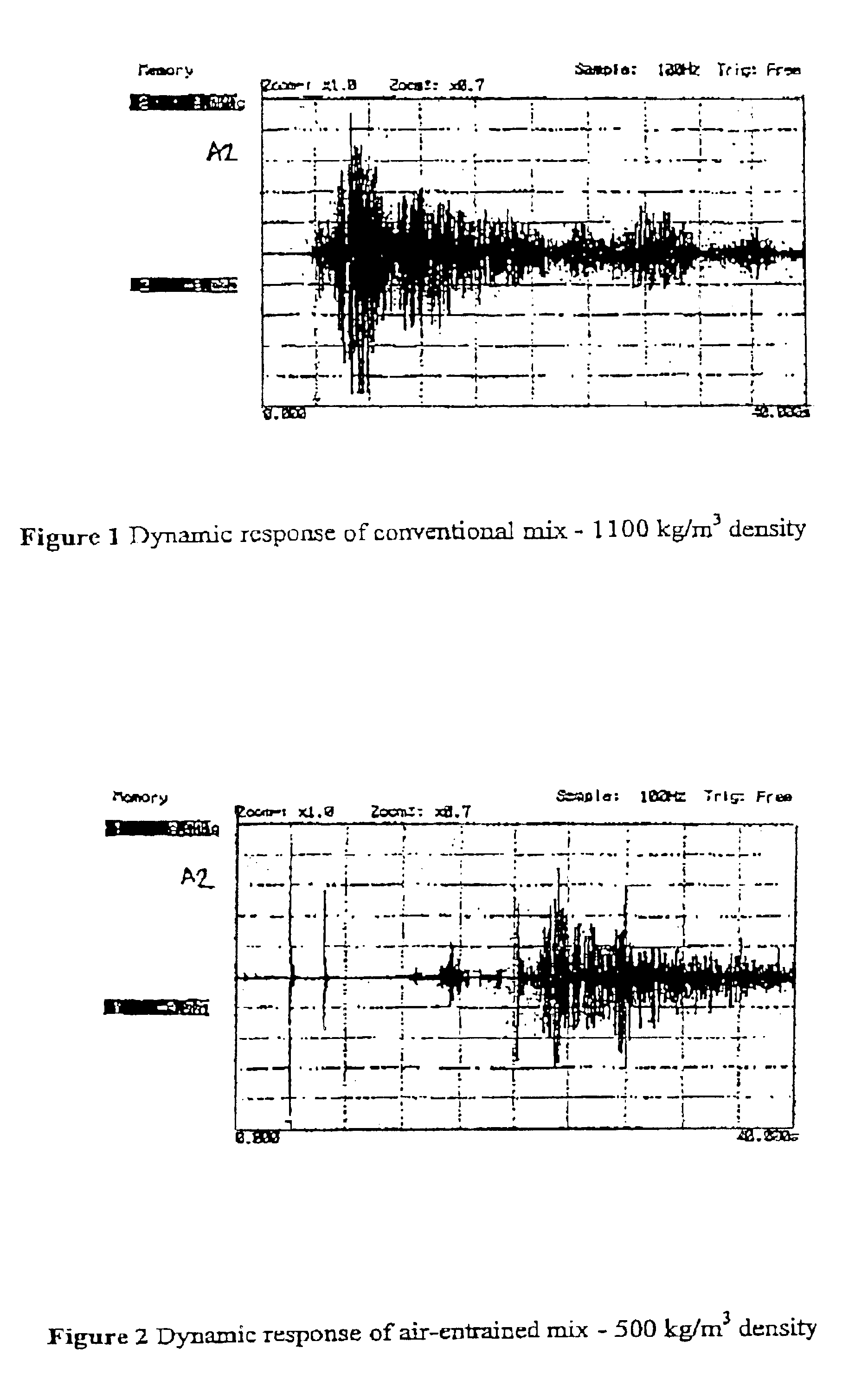Concrete formulation
a technology of concrete and formulation, applied in the field of light-weight concrete, can solve the problems of inconsistent density and difficult workability, and achieve the effects of negating the intended effect, substantial material cost savings, and compromising structural integrity
- Summary
- Abstract
- Description
- Claims
- Application Information
AI Technical Summary
Benefits of technology
Problems solved by technology
Method used
Image
Examples
example 1-3
describes various mixtures of lightweight concrete using polystyrene aggregate, perlite and vermiculite as lightweight aggregate and sand and fly ash as fillers.
example 1
Use of EPS As Lightweight Aggregate and Sand As Filler
QuantityUnit Mix IngredientsCement50kgSand40kgPolystyrene Aggregate200liters(50% solid / bulk ratio)Water35liters Blend:Air Entrainer (Anionic0.1%by wt. of cementSurfactant)Organic polymer0.3%by wt. of cementDensity of fresh mix500kg / m3Yield of fresh mix250liters% Entrained Air30%
example 2
Use of Polystyrene As Lightweight Aggregate and Fly Ash+Sand As Filler
QuantityUnit Mix IngredientsCement30kgSand20kgFly Ash45kgPolystyrene Aggregate225liters(50% solid / bulk ratio)Water45liters Blend:Air Entrainer (Anionic0.1%by wt. of cementSurfactant)Organic polymer0.3%by wt. of cementDensity of fresh mix500kg / m3Yield of fresh mix280liters% Entrained Air30%
EXAMPLE 3
Use of Perlite As Lightweight Aggregate
QuantityUnit Mix IngredientsCement40kgSand40kgPerlite40liters(50% solid / bulk ratio)Water30liters BlendAir Entrainer (Anionic0.3%by weight of cementSurfactant)Organic polymer0.3%by weight of cementDensity of fresh mix700kg / m3Yield of fresh mix160liters% Entrained Air50%
Comments on Examples 1-3
The mixes prepared according to those recipes were pumped into the cavities of a number of fibre reinforced cement lined sandwich walls, 2400 mm×2400 mm×75 mm in size. Upon observation, it was found that the mixes were:Pumpable, i.e. no clogging of line or segregation of mix was observed.Stable,...
PUM
| Property | Measurement | Unit |
|---|---|---|
| Fraction | aaaaa | aaaaa |
| Fraction | aaaaa | aaaaa |
| Percent by mass | aaaaa | aaaaa |
Abstract
Description
Claims
Application Information
 Login to View More
Login to View More - R&D
- Intellectual Property
- Life Sciences
- Materials
- Tech Scout
- Unparalleled Data Quality
- Higher Quality Content
- 60% Fewer Hallucinations
Browse by: Latest US Patents, China's latest patents, Technical Efficacy Thesaurus, Application Domain, Technology Topic, Popular Technical Reports.
© 2025 PatSnap. All rights reserved.Legal|Privacy policy|Modern Slavery Act Transparency Statement|Sitemap|About US| Contact US: help@patsnap.com


